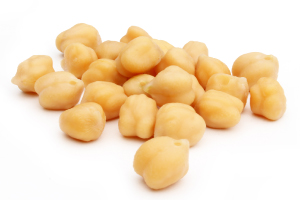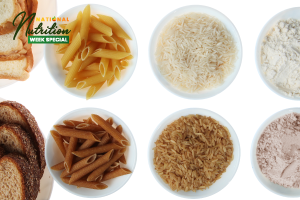

Dietary fibre, also known as roughage, is the indigestible component of plant-based food items, and can be mostly found in fruits, vegetables, and whole grains. Consuming dietary fibre foods is considered to be highly beneficial for gut health and is most known for the properties of relieving constipation in various individuals. It is also known for its properties to help reduce the risk of chronic illnesses such as type 2 diabetes as well as cardiovascular health.
Types of Dietary Fibre
Fibre, when consumed, isn’t digested or processed by our body. It is, in fact, almost intact when being passed out of the body. Based on the fermentability or the ability to dissolve with water, dietary fibres can be divided into two categories: soluble and insoluble dietary fibre. Both types of dietary fibre are beneficial for the body.
Soluble Dietary Fibre: It has the characteristic of dissolving in water and forming a gel-like substance during the process of digestion. Soluble fibres can further be divided into three sub-categories:
- Pectin: It is found in the plant cell wall with D-galacturonic acid as the primary component. Some foods containing Pectin dietary fibre examples are – fruits, vegetables (including beetroot and potato), and sugar.
- Mucilages: Mucilage is a highly viscous substance, with high water-holding capacity, found in plants. It helps prevent excessive dryness in the seed endosperm and is added to food items to give an added firmer texture. Good dietary fibre examples containing mucilages are plant extracts like gum acacia, gum karaya, and gum tragacanth.
- Gums: Gums are usually used in the food industry to thicken and emulsify food products. They also have several pharmaceutical uses. Dietary fibre examples to obtain gums can be seaweed extracts, leguminous seed plants, and microbial gums.
Insoluble Dietary Fibre: As the name suggests, insoluble dietary fibre cannot dissolve in water. Rather, it aids the movement of content through the digestive system, thereby adding bulk to the stool, making it easier to pass through the body and preventing constipation. Insoluble fibres can also be divided into three sub-categories:
- Cellulose: It is found in the plant cell wall and aids the structure of the same. The enzymes present in the human body are not capable of breaking down cellulose. Cellulose can help regulate healthy movement. Dietary fibre examples for the same would be vegetables, brans, and sugar beet.
- Hemicellulose: Hemicellulose is found in the cell wall of a plant and is known to aid constipation and help with weight loss. It can be obtained from nuts, whole grains, bran, and seeds.
- Lignin: Lignin is the type of fibre that is the most unaffected by the digestive enzymes present in our body. Lignin concentration increases in plants as they mature. It is found in woody plants.
Sources and Consumption of Dietary Fibre
The amount of dietary fibre present in different food items differs. The more processed or refined a food item is, the lower is its fibre content. The refining process involves removal of bran, the outer coating rich in fibre content, from a grain. Good dietary fibre examples of food items may include:
- Whole grains
- Vegetables
- Fruits
- Nuts and seeds
- Peas, beans, and other legumes

Consumption of the right amount of dietary fibres is also essential. The daily recommended intake of dietary fibre is as follows:
- 38 grams for adult men below 51 years of age
- 30 grams for men aged 51 years or above
- 25 grams for adult women below 51 years of age
- 21 grams for women aged 51 years or above
Benefits of Consuming Dietary Fibre
Dietary fibre is a form of carbohydrates and comes packed with various benefits. Some of the major health benefits of consuming dietary fibre have been discussed below:
1. Relieves Constipation and Aids Healthy Bowel Movement
Consuming foods high in dietary fibre may take longer to digest but can help our body absorb excessive water from the colon and add bulk to the stool. This helps quicker movement of stool out of our body. The risk of colon cancer because of constipation is also reduced.
2. Improves Gut Health
Regular and healthier stools facilitated by consumption of dietary fibre ensures reduction of the time spent in elimination of waste as it speeds up the transit time. This reduces the risk of colorectal ulcer, colorectal cancer, gastroesophageal reflux disease, hiatal hernias, haemorrhoids, and other health conditions.
3. Aids Cholesterol
Consumption of fibre from various food sources may help lower low-density lipoprotein (LDL) that is also known as bad cholesterol. Dietary fibre may also help maintain cardiovascular health and lowers the risk of heart disease.
4. Controls Blood Sugar Level
Fibre usually takes a longer time to digest than other forms of carbohydrates, which slows down the process of it being absorbed by the body. Therefore, it has a slower impact on blood sugar level. We can also conclude that for people suffering from type 2 diabetes dietary fibre is quite beneficial.
5. Weight Loss and Management
Consuming dietary fibre helps satiate the stomach, making you feel full for longer durations of time. It also sustains our energy levels longer, keeping hunger at bay, thereby helping us manage or lose weight.
Conclusion
Dietary fibre can be very beneficial for our overall health. However, you should pay attention to the consumption amount. Diet that contains high amounts of dietary fibre may hamper the absorption of important minerals like iron, zinc, and calcium. This is because fibre may cohere these nutrients along and the same may be excreted from the body without being absorbed.
Dietary fibre is not absorbed or digested by our body because our enzymes are not functioned for the same. Therefore, dietary fibre is non-nutrient.
Least processed food sources are the healthiest forms of dietary fibre. The intake can be increased either by consuming fruits and vegetables with their skins intact or consuming fibre supplements after consulting a doctor. Consuming whole grain versions of breakfast foods can not only help you start your day with a healthy diet but can also keep you full and provide ample energy to start your day on a healthier note.




